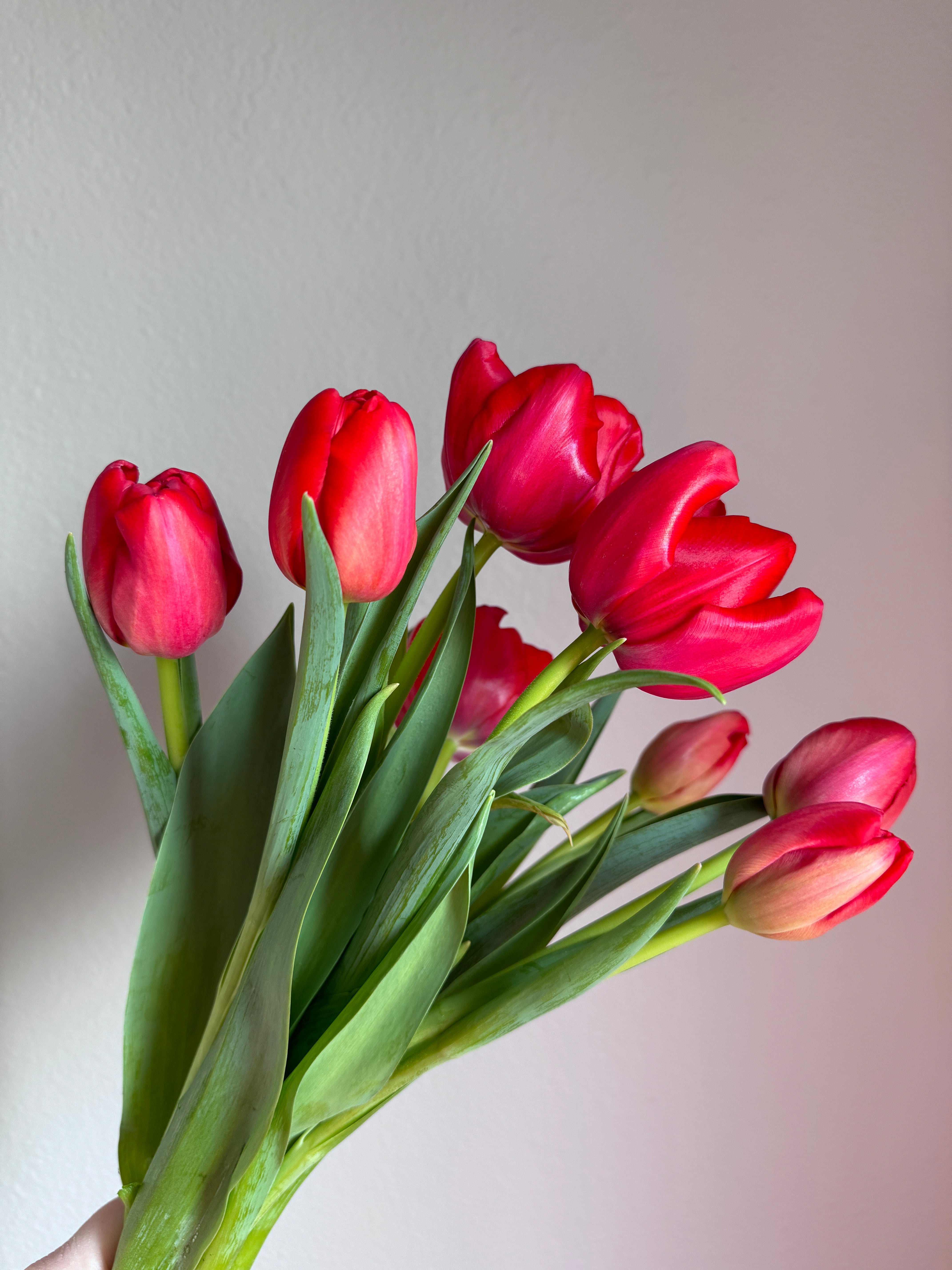What You Need to Know
Tulip bulbs are an easy way to add pops of color to Spring gardens. They are some of the earlier Spring flowers to initiate Spring is here. Lets go over some tips about when and how to plant tulip bulbs in Fall.
When to Plant...
A Tulip bulb needs time to chill in the ground. Then starts to grow its root system to create that beautiful bloom you been waiting for all Winter. They require a certain amount of weeks with cold temperatures to ensure a bloom come Spring. This can range from 14-16 weeks. Soil temperature is also key at this stage.
I am typically preparing my beds for planting in September and early October. This is for selfish reasons - the weather is still pleasant and the ground is easy to work. If I can get them into the ground by October or first weeks in November, I then know they will have the required 14-16+ weeks before they will start growing their roots.
Our temperatures in October typically are 60-50 degrees during the day and 40s at night. The Winter will get to 0-10 degrees and sometimes will experience a stretch in the negatives. Colder the better for these bulbs during the winter.
How to Plant...
Select an area of your garden that has good soil drainage and receives sunshine at least 6+ hours per day come February through April. Tulips don't like their "feet wet". Which means no standing water where the roots are.
Planting in a home garden: When you are ready to plant, dig a hole 4-6 inches deep and twice the size of the bulb. Plant tulip bulb point up. Cover with soil. Once that section is planted, give one last deep watering with a garden hose and then wait until Spring.
You can plant bulbs in groups of 10-20 bulbs for a spray of color amongst your other plants. Another eye catching planting style is to place the bulbs one after another lining a walk way to greet you with color each time you pass that space.
Planting in a raised bed for flower production: Dig a trench about 6 inches deep. My flower beds are often 3 feet wide. Then plant each bulb in a grid formation, side by side like you would see in an egg carton. Make sure they don't touch, the bulb point is facing up and give one last good drench of water before adding soil on top. Tulips like receiving 6+ hours of sunshine come February through April and the soil needs to drain well. They don't like "wet feet".

Tulip Wrap Up
- Storage: If you receive your bulbs before you are ready to plant, store in a cool, dry place like a garage.
- Where to Plant: Pick a location that has 6+ hours of sunshine come February through April with well drained soil.
- How to Plant: Dig a hole that is 4-6 inches deep and twice as wide at the bulb. Cover with soil and give one last deep soak with water.
- Come Spring: Our Spring in Eastern WA is often dry with little to no rain and very little to no snow pack. They need moisture in the Spring to fuel their foliage and buds. So I look at the weather predictions for the week and pick a day to water deeply the planted area once a week. This has helped with stem length and more tulips blooming in our mild climate (Zone 7).
- If planting in the home garden and would like blooms the following Spring, make sure the green foliage has time to die back or turn yellow.
- If planting for flower production: Harvest tulip stems at the ground level or pull out of the ground with bulb attached. We don't save the bulbs because they don't grow as well the second year. Tulips for us are grown as an annual since we use them for cut flower production. New bulbs go into the ground each year. Make sure you rotate your planting places every year due to diseases that can be produced in the soil. My gardens are on a 7 year rotation.
Bonus Tulip Tips:
- Tulips can bloom from late March-April typically if planted outside. If you are wanting a succession of flowers over multiple weeks, buy bulbs in all categories to have a wave of colors this Spring. Tulips will fall in the following categories; early, mid and late.
- If you live in a mild climate and are having trouble with short stems or tulips not producing buds that turn into blooms, try purchasing pre-cooled bulbs. These bulbs have received enough cooling weeks to start rooting with a higher chance of success. More on this topic later...
Tulips have become a welcomed flower in my gardens for their variety of pedal shapes, and the much needed color after a long Winter. I hope you find the simple pleasures like I have by trying these easy to care for bulbs.
Happy planting Flower Friends!
Jessica
The Urban Wildflower Co.



